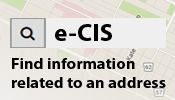Larviciding
What is larviciding?
Where do we larvicide?
How many standing water sites are there?
When do we larvicide?
What larvicides do we use?
How do we larvicide?
How does larviciding for nuisance mosquito control differ from larviciding for the vector species of mosquitoes?
What is larviciding?
The largest component of the Insect Control Branch's mosquito control program is the larviciding operation. The City of Winnipeg Insect Control Strategy calls for an aggressive larviciding program as it is the most effective and environmentally acceptable method of mosquito population reduction. Mosquito larvae are concentrated in water sites which make them the most vulnerable stage of the mosquito lifecycle. By targeting larvae in ditches, pools and containers, countless numbers of mosquitoes are killed before they reach the flying adult, biting stage.
Where do we larvicide?
The City conducts its Larviciding by focussing on all known larval development sites within the City of Winnipeg, including public and private property, and up to 8 km beyond the City limits. Larviciding is conducted by both ground and helicopter crews. If you would like to find out if your property is already on the existing list or if you would like to have your property assessed for standing water and larval development, please contact 311. Mosquito larvae occur in many types of aquatic habitats. The most common nuisance species lay their eggs in temporary or ephemeral rainwater pools of 1 to 2 weeks duration. Vector, or disease carrying, species generally lay eggs in all types of containers, semi-permanent and permanent aquatic habitats.
How many standing water sites are there?
The number and size of standing water sites varies throughout the season and from year to year based on a number of factors including rainfall, ground saturation, temperature, commercial/residential development and alterations to land drainage.
The City monitors and treats up to approximately 33,000 hectares of water area on an ongoing basis. Our Global Information System (GIS) database contains approximately 7,000 standing water site listings.
When do we larvicide?
Larviciding operations are carried out from late-April through September every year. Larviciding crews work 7 days per week, especially when excessive rainfall causes the widespread hatching of mosquito eggs in floodwater larval development sites.
What larvicides do we use?
The City of Winnipeg's Nuisance Mosquito Control Program uses a combination of biologicals and biorational larvicides which are applied according to Health Canada's Pest Management Regulatory Agency (PMRA) regulations.
The City uses the following biological larvicides: Bacillus thuringiensis var. israelensis, known as Bti under the trade names Vectobac® 200G and Vectobac® 1200L.
The City uses the following biorational larvicides: Methoprene under the trade name Altosid® - Granular (methroprene) and Altosid® - Liquid (methroprene).
All applications meet or exceed provincial permit requirements.
How do we larvicide?
The City of Winnipeg's Nuisance Mosquito Control Program uses various types of equipment to apply a combination of biological and biorational larvicides using truck mounted equipment, backpacks, ATVs and helicopters.
The Branch uses truck mounted equipment and backpacks to apply granular and liquid biological larvicides. The Branch uses Bacillus thuringiensis var. israelensis, known as Bti under the trade names Vectobac® 200G and Vectobac® 1200L. The Branch also uses following biorational larvicides: Methoprene under the trade name Altosid® - Granular (methroprene) and Altosid® - Liquid (methroprene).
The Branch uses helicopters to apply granular larvicides. Helicopters use Bacillus thuringiensis var. israelensis, known as Bti under the trade name Vectobac® 200G. Helicopters also use Methoprene under the trade name Altosid® - Granular (methroprene).
For more information check out this video.

How does larviciding for nuisance mosquito control differ from larviciding for the vector species of mosquitoes?
There are two types of mosquitoes:
- adult nuisance mosquitoes, which are the common biting type, and
- vector species of mosquitoes which can possibly transmit a variety of diseases, including West Nile virus.
The primary vector mosquito species in Manitoba are Culex tarsalis and Culex restuans. Vector control is required when the primary vectors begin to emerge as early as mid-June in Winnipeg. These water bodies at these targeted sites undergo larviciding and monitoring more often as the reduction of vectors is far more important from a public health protection perspective than the control of nuisance species. The Branch conducts larviciding for vector control on a municipal/provincial cost-shared basis as a component of the Manitoba West Nile Virus Program.

